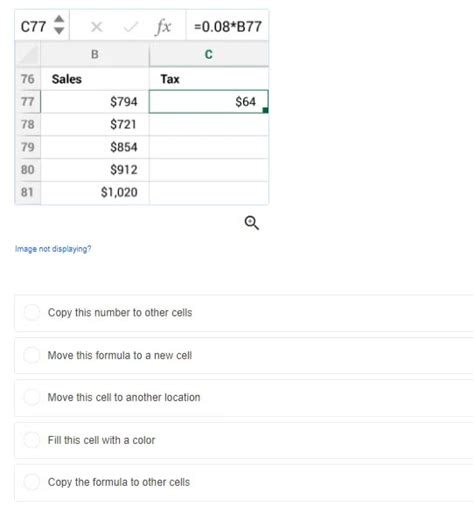Reference Cell A1 From The Alpha Worksheet
Holbox
Mar 31, 2025 · 6 min read

Table of Contents
- Reference Cell A1 From The Alpha Worksheet
- Table of Contents
- Referencing Cell A1 from the Alpha Worksheet: A Comprehensive Guide
- Understanding Worksheet Referencing
- Basic Syntax: Referencing Cell A1 from "Alpha"
- Handling Worksheet Names with Spaces or Special Characters
- Absolute vs. Relative References
- Latest Posts
- Latest Posts
- Related Post
- Reference Cell A1 From The Alpha Worksheet
- Table of Contents
- Referencing Cell A1 from the Alpha Worksheet: A Comprehensive Guide
- Understanding Worksheet Referencing
- Basic Syntax: Referencing Cell A1 from "Alpha"
- Handling Worksheet Names with Spaces or Special Characters
- Absolute vs. Relative References
- Latest Posts
- Latest Posts
- Related Post
Referencing Cell A1 from the Alpha Worksheet: A Comprehensive Guide
Referencing cells from other worksheets is a fundamental skill in spreadsheet software like Microsoft Excel or Google Sheets. This comprehensive guide will delve into the intricacies of referencing cell A1 from a worksheet named "Alpha," exploring various methods, potential challenges, and best practices. We'll cover everything from the basic syntax to advanced techniques for efficient and error-free referencing.
Understanding Worksheet Referencing
Before diving into the specifics of referencing cell A1 from the "Alpha" worksheet, let's establish a foundational understanding of worksheet referencing. Spreadsheet software organizes data into worksheets, which are essentially individual sheets within a single workbook (file). To access data from one worksheet to another, you need to specify the worksheet's name and the cell's location.
This process involves using a specific syntax that tells the software where to find the desired data. Incorrect syntax will lead to errors, making it crucial to understand the proper formatting.
Basic Syntax: Referencing Cell A1 from "Alpha"
The most straightforward way to reference cell A1 from a worksheet named "Alpha" is using the following syntax:
='Alpha'!A1
Let's break this down:
=: This symbol indicates that you're entering a formula.'Alpha': This is the name of the worksheet containing the cell you want to reference. Notice that the worksheet name is enclosed in single quotes (apostrophes). This is essential if the worksheet name contains spaces or special characters.!: This exclamation mark acts as a separator between the worksheet name and the cell reference.A1: This represents the cell's location within the "Alpha" worksheet.
This formula, when entered into any cell in your current worksheet, will display the value contained in cell A1 of the "Alpha" worksheet. If cell A1 in "Alpha" contains the number 10, then this formula will display 10. If it contains text like "Hello," then the formula will display "Hello".
Handling Worksheet Names with Spaces or Special Characters
If your worksheet name contains spaces or special characters (e.g., "My Data Sheet" or "Sales_Q1"), it's crucial to enclose the name in single quotes. For instance, to reference A1 from a worksheet named "My Data Sheet," you would use:
='My Data Sheet'!A1
Omitting the single quotes in such cases will result in a formula error.
Absolute vs. Relative References
Understanding the difference between absolute and relative references is critical, especially when copying and pasting formulas.
-
Relative Reference: A relative reference changes when the formula is copied to a different cell. For example, if you copy the formula
=A1from cell B1 to cell C1, it will become=B1in cell C1. -
Absolute Reference: An absolute reference remains constant when the formula is copied. To create an absolute reference, you use the dollar sign ($) before the column letter and/or row number. For example,
=
Latest Posts
Latest Posts
-
Within The First 10 Minutes On The Basis
Apr 03, 2025
-
What Is One Provision Of The Uruguay Round Agreement
Apr 03, 2025
-
Rank The Measurements In Order From Smallest To Largest
Apr 03, 2025
-
The Following Events Pertain To Super Cleaning Company
Apr 03, 2025
-
How Far Will You Travel Portfolio
Apr 03, 2025
Related Post
Thank you for visiting our website which covers about
Reference Cell A1 From The Alpha Worksheet .
We hope the information provided has been useful to you. Feel free to contact us if you have any questions or need further assistance. See you next time and don't miss to bookmark.
